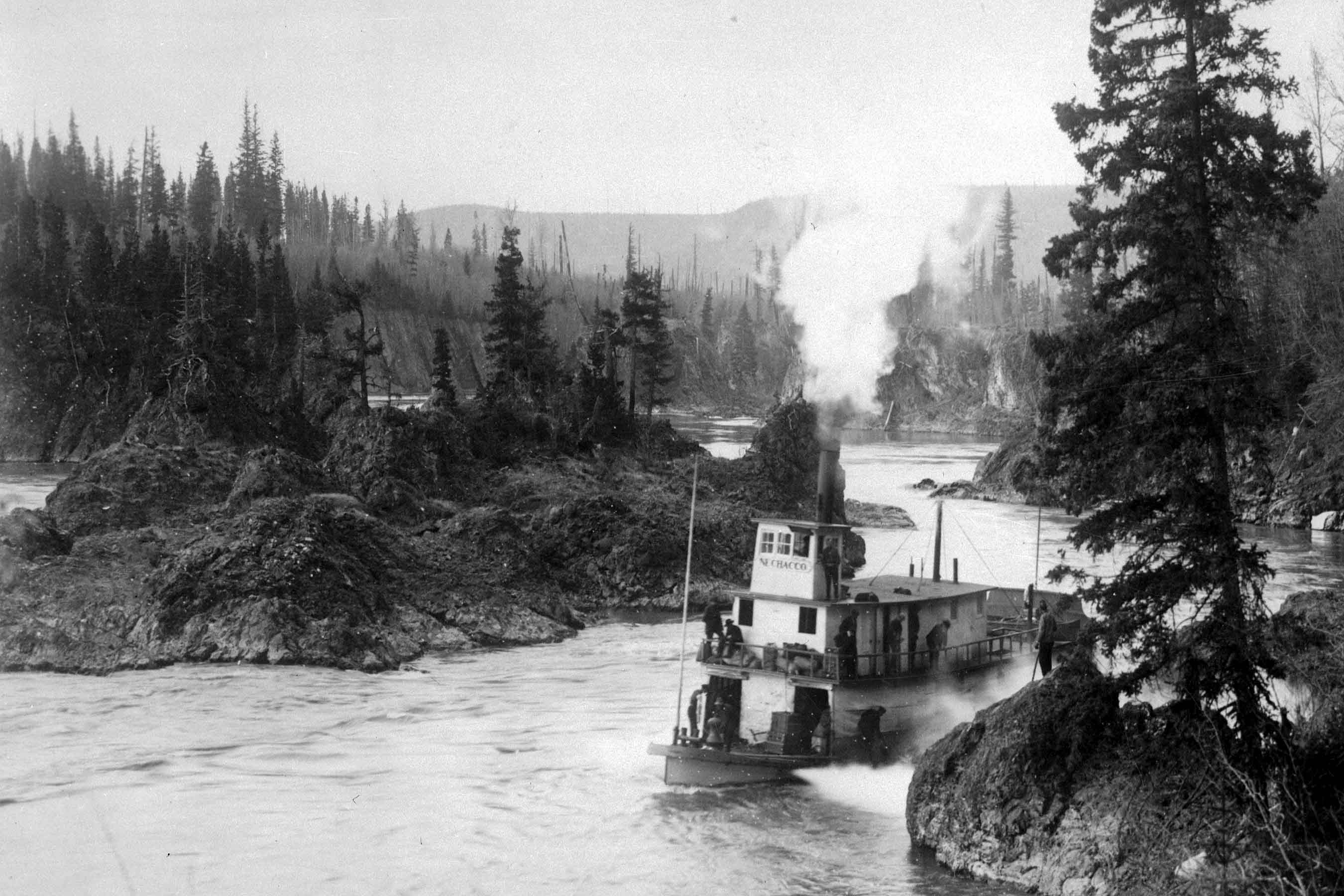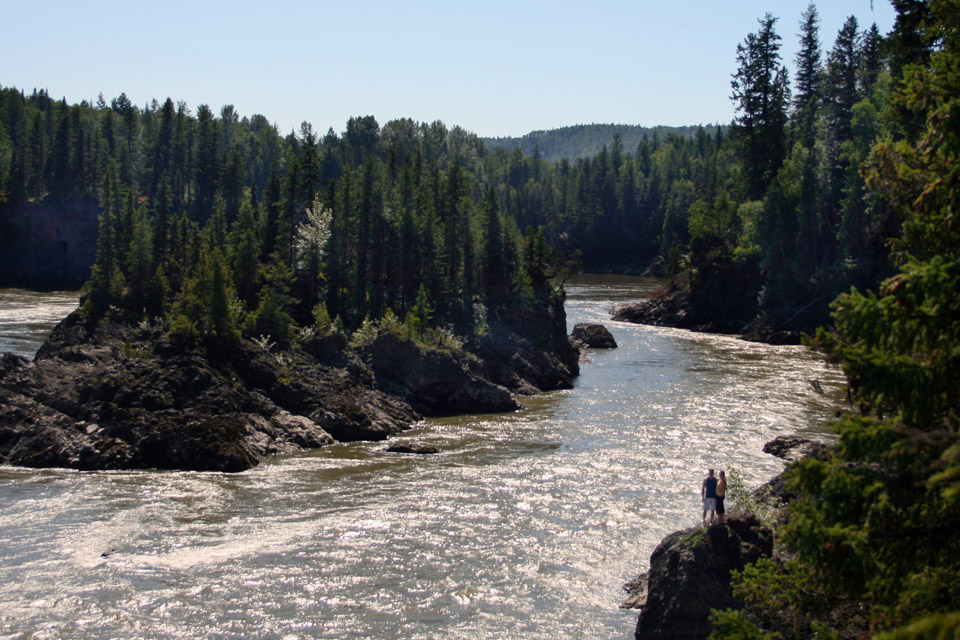Alexander Mackenzie on the Upper Fraser
By mid-June, 1793, Alexander Mackenzie had reached waters flowing into the Fraser River, and on Wednesday June 19 his group was on the main river, and encountered their first major set of rapids, now known as Fort George Canyon, a few kilometers south-west of the city of Prince George. They made one portage, and:
Here I took a meridian altitude which gave me 53. 42. 20. North latitude. We, however, lost some time to put our canoe in a condition to carry us onwards. Our course was South a quarter of a mile to the next carrying-place; which was nothing more than a rocky point about twice the length of the canoe. From the extremity of this point to the rocky and almost perpendicular bank that rose on the opposite shore, is not more than forty or fifty yards. The great body of water, at the same time tumbling in successive cascades along the first carrying-place, rolls through this narrow passage in a very turbid current, and full of whirlpools. 1
For the next century the traffic of the fur trade would continue to pass through these rapids along the river route. On June 13, 1833 David Douglas, while sponsored by the Hudson’s Bay Company to collect biological specimens across the northwest, was nearly drowned here when his canoe capsized when the river was in flood. 2 In the 1890s, steam paddle wheelers replaced canoes for freighting supplies along this section of the river (see repeat photographs). On June 19, Mackenzie continued southward on the river and saw the first houses he had seen since living eastern North America.
We landed at a deserted house, which was the only Indian habitation of this kind that I had seen on this side of Mechilimakina (the region around the Straits of Mackinac between Lake Huron and Lake Michigan). It was long and twenty wide, with three doors, three feet high by one foot and an half in breadth. From this and other circumstances, it appears to have been constructed for three families. There were also three fire-places, at equal distances from each other; and the beds were on either side of them. Behind the beds was a narrow space, in the form of a manger, and somewhat elevated, which was appropriated to the purpose of keeping fish. The wall of the house, which was five feet in height, was formed of very strait spruce timbers, brought close together, and laid into each other at the corners. The roof was supported by a ridge pole, resting on two upright forks of about ten feet high; that and the wall support a certain number of spars, which are covered with spruce bark; and the whole attached and secured by the fibers of the cedar. One of the gable ends is closed with split boards; the other with poles. Large rods are also fixed across the upper part of the building, where fish may hang and dry…. 3
These semi-permanent habitations are indicative of resource-rich locations such as salmon fishing sites. Indeed, inside the house, Mackenzie found a large cylindrical fish trap that would be placed in the river once the salmon run began. He continued down the river for another 3 days until he encountered another group of native peoples who were likely Tsilhgot’in (Chilcotin). They described the long distance and numerous rapids he would encounter if he continued down the river. They suggested an alternate overland route directly west across the mountains:
According to their account, this way is so often travelled by them, that their path is visible throughout the whole journey, which lies along small lakes and rivers. It occupied them, they said, no more than six nights, to go to where they meet the people who barter iron, brass, copper, beads, &c., with them, for dressed leather, and beaver, bear, lynx, fox, and marten skins. 4
After reviewing their supplies, and amount of time remaining in the summer travelling season, Mackenzie’s group decided to follow direct route to the coast, which followed the West Road River (now called the Blackwater) from near its mouth with the Fraser. On July 4, his group cached their canoe and spare supplies, and following their native guides on a well-used trade trails, started on a 200 kilometer trek over the Coast Range.
<Previous page Chapter Overview Next page>
Map and Footnotes

